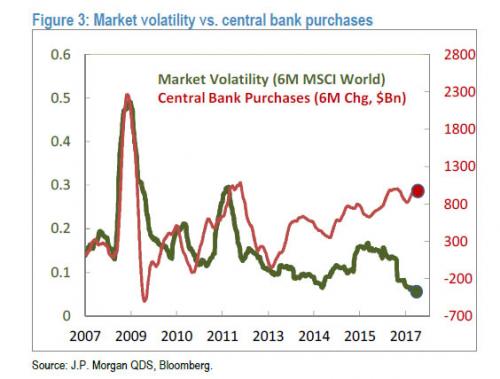Last Thursday, when the VIX briefly soared from 10 to 15, crossing the level which Marko Kolanovic previously said could lead to “catastrophic losses” for systematic funds and vol sellers, we asked two questions: “i) Will today’s selloff lead to a broad deleveraging among vol-sellers who are forced to cover into a sharply rising VIX, and ii) will the risk parity funds finally be forced to unwind?”
While the VIX surge was short-lived (thus answering question i) with the VIX tumbling back to 11 by EOD, it allowed us to trot out our favorite risk-parity chart, a matrix showing implied deleveraging thresholds for a large cross-section of the risk-parity industry, based on intraday moves in equities vs bonds.

While Thursday’s fireworks weren’t as acute as the 2015 Taper Tantrum, for a few minutes it did seem that a broad wave of risk parity deleveraging was about to kick in, potentially resulting in a few worse outcome for capital markets.
And even though it is probably just a coincidence, Goldman’s Ian Wright boldly went where BofA…

… and JPM…

… have both gone before on several occasions in the very recent past, namely warning that in the current environment, there is a growing risk “of a negative rate shock, especially for balanced and risk parity investors.” Here is why Goldman is growing concerned that a spike in vol (coupled with a coordinated move either higher or lower in both stocks and bonds) could result in pain for the market.
Last week the worst returns across assets we track were in European equities and German 10-year Bunds. US equities and bonds were also down on the week. Ultimately, we think higher real rates weighed on equities and bonds, creating a particularly bad combination for balanced investors. For example, a simple risk parity portfolio strategy we track experienced a material drawdown last week, especially in Europe.













Leave A Comment